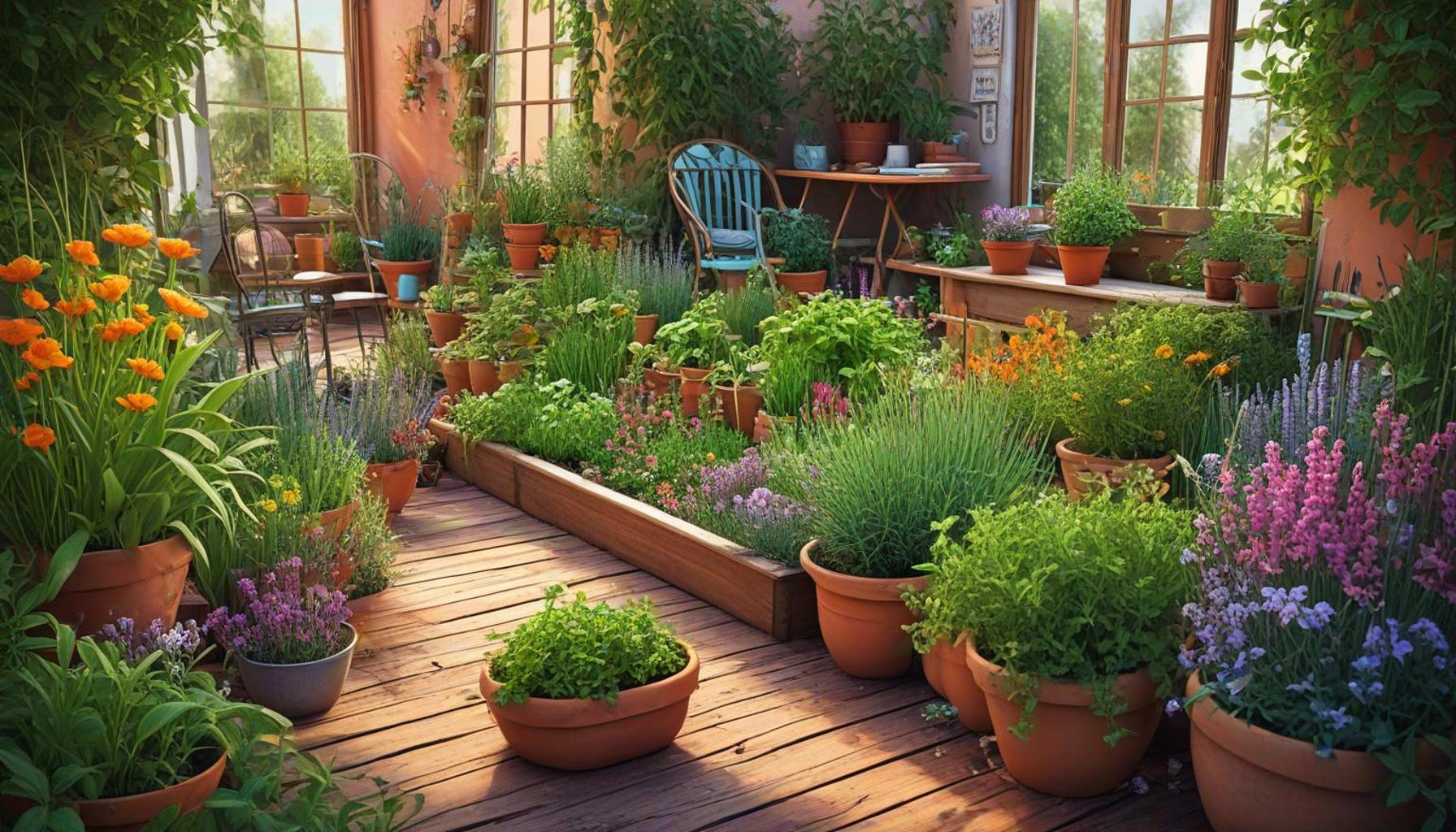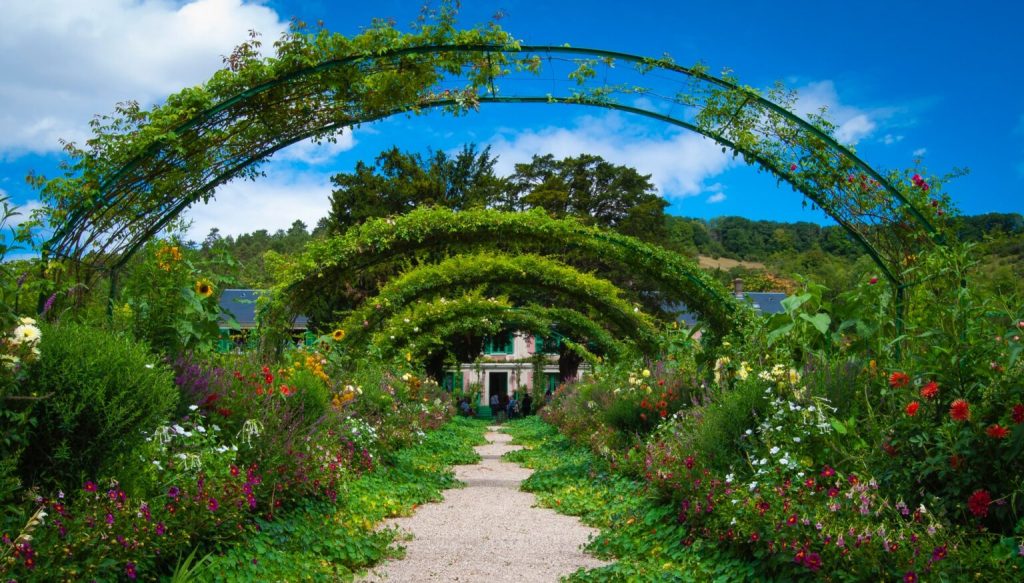Aromatherapy Gardening: Designing Spaces that Stimulate the Senses with Herbs and Aromatic Plants

The Art and Benefits of Aromatherapy Gardening
Imagine stepping into a garden where every breath you take is filled with delightful scents, nourishing both your body and mind. Aromatherapy gardening not only enhances the aesthetic appeal of your outdoor space but also offers a unique way to cultivate an experience that stimulates the senses, making it a vital aspect of modern gardening. This harmonious blend of nature and wellness has captured the hearts of gardening enthusiasts across the nation.
At the core of aromatherapy gardening lies a thoughtful selection of plants and design elements that work together to create a sensory haven. By incorporating a variety of aromatic plants, one can transform a simple garden into an oasis of tranquility and healing. Consider the following elements that can significantly enhance your aromatherapy garden:
- Herbs: Plants like lavender, mint, and rosemary are well-known for their soothing properties. Lavender, for example, is celebrated not just for its pleasant aroma but also for its ability to promote relaxation and improve sleep quality. Mint can invigorate the senses and boosts mental clarity, while rosemary is often associated with memory enhancement.
- Aromatic Plants: In addition to herbs, other aromatic plants such as jasmine and geranium add a layer of sensory enrichment. Jasmine is renowned for its sweet, romantic scent and is often used in aromatherapy to uplift the mood and reduce anxiety. Geranium, on the other hand, is valued for its grounding properties, helping to balance emotions and support skin health.
- Design Features: An appealing layout can further enhance the experience. Incorporating winding pathways allows visitors to meander through the garden, discovering scents at every turn. Water features, such as small fountains or ponds, can create a soothing soundtrack of flowing water that complements the fragrant air. Furthermore, designated sitting areas with comfortable benches encourage visitors to take a moment to pause and appreciate the beauty and fragrance surrounding them.
Gardening enthusiasts are increasingly discovering the charm and therapeutic benefits of creating spaces that engage all the senses. The therapeutic effects of aromatic plants can lead to profound benefits, including reduced stress, improved concentration, and enhanced overall well-being. Research has shown that exposure to pleasant scents can lower cortisol levels, suggesting that a carefully curated garden could serve as a natural antidote to the pressures of daily life.
As you delve deeper into this practice, consider how carefully selected plants can transform your outdoor space into a sanctuary for relaxation and rejuvenation. By embracing the art of aromatherapy gardening, you are not only investing in the beauty of your landscape but also prioritizing your mental and physical health in a tangible way. In the subsequent sections, we will uncover invaluable tips and tricks for designing your very own aromatherapy sanctuary, allowing you to harness the innate power of nature for stress relief and emotional balance.
DISCOVER MORE: Click here to enhance your musical journey

Creating a Sensory Experience with Aromatherapy Gardening
Aromatherapy gardening transcends traditional gardening by weaving together a tapestry of scents, colors, and textures that engage the senses, ultimately fostering a deeper connection with nature. Whether you’re a seasoned gardener or a novice, the integration of aromatic herbs and plants into your landscape can create not only visual beauty but also a holistic experience that promotes mental and physical wellness.
Understanding the diverse range of aromas that various plants offer is pivotal in the design of an aromatherapy garden. Different scents have unique properties and therapeutic benefits; thus, choosing the right plants is essential. Here are some key categories of aromatic plants to consider incorporating into your garden:
- Culinary Herbs: Commonly used in kitchens, herbs like basil, thyme, and oregano offer delightful aromas that not only enhance culinary creations but also serve aromatherapeutic purposes. Basil’s sweet and peppery scent can uplift moods, while thyme is noted for its ability to help relieve respiratory ailments.
- Fragrant Flowers: Flowers such as lavender and lilac contribute vibrant colors along with their pleasant fragrances. Lavender, in particular, is revered for its calming properties, often used in essential oils and sachets to reduce anxiety and improve sleep. Lilac, with its rich, sweet scent, is known to evoke feelings of nostalgia and happiness.
- Aromatic Shrubs: Shrubs like rosemary and scented geraniums not only provide structure to a garden but also release fragrances that invigorate the senses. Rosemary, often associated with memory and mindfulness, can enhance mental clarity and well-being. Scented geraniums, with their tangy and citrusy aroma, can repel pests while also benefiting your sense of smell.
In recent years, the popularity of aromatherapy gardening in the United States has surged, driven by an increasing awareness of the mental health benefits associated with natural environments. Studies have shown that spending time in nature can significantly reduce stress levels and improve overall well-being. By implementing design strategies aimed at maximizing sensory stimulation, gardeners can create environments that effectively nurture mental health.
For instance, engaging all five senses not only cultivates a welcoming atmosphere but also deepens the experience for visitors. The sight of vibrant greenery, the sound of rustling leaves and flowing water, the touch of soft petals or cool leaves, the taste of herbs picked fresh from the garden, and the enchanting array of fragrances can transform any simple outdoor space into a multi-dimensional escape.
As we move forward, we will explore effective design principles and practical tips on how to cultivate your own aromatherapy garden. This exploration of herbs and aromatic plants aims to empower you to create a personalized sanctuary where nature’s therapeutic benefits can flourish, providing solace, rejuvenation, and an inviting space for both you and your loved ones.
| Advantages | Description |
|---|---|
| Enhanced Well-being | Incorporating aromatic plants fosters a calming atmosphere, promoting emotional balance and reducing stress. |
| Sensory Experience | Aromatherapy gardening engages the senses, transforming ordinary spaces into multi-sensory environments that rejuvenate the mind. |
Aromatherapy gardening is not just an activity; it is an immersive experience that intertwines nature with healing properties. When designing a garden that integrates herbs and aromatic plants, one must consider how these elements may influence overall health and emotional well-being. By selecting plants like lavender, rosemary, and mint, gardeners can create a sanctuary that actively enhances mental clarity and encourages relaxation. The act of gardening itself can provide therapeutic benefits, as it facilitates mindfulness and connection to the earth. Moreover, scent plays a pivotal role in memory and emotion. The aromatic compounds released by plants have been known to evoke feelings of nostalgia and comfort, making the space not only beneficial for physical health but also for emotional enrichment. Therefore, designing a personalized aromatherapy garden offers a blend of aesthetic beauty and practical wellness, lending itself to a lifestyle enriched by nature’s gifts.
DIVE DEEPER: Click here to unlock your creativity
Integrating Aromatherapy into Garden Design
Designing an aromatherapy garden involves more than just selecting the right plants; it requires a thoughtful approach that harmonizes with the surrounding environment while enhancing sensory engagement. Achieving this balance can transform your space into a sensory haven. One effective strategy is to consider the layout of your garden. By creating distinct areas, you can curate themed scents that change throughout the garden, enticing visitors to explore further.
One popular design concept is the herb spiral. This innovative structure not only maximizes space but also creates varied microclimates, encouraging a diverse range of aromatic plants to thrive. Placing sun-loving herbs such as sage and thyme at the top while shade-loving plants like mint at the base optimizes growth conditions. Not only does this spiral design promote a healthier garden, but it also allows for greater accessibility when harvesting herbs for culinary and therapeutic uses.
Pathways play a critical role in directing the sensory journey through your garden. Consider using natural stone or recycled materials to create textured paths that invite tactile exploration. Imagine walking barefoot on soft grass or cool pebbles while being enveloped by the soothing scents of jasmine and lemon balm. Such pathways can be interspersed with aromatic plants, encouraging visitors to brush against them and release their delightful fragrances.
Water Features and Aromatherapy
Incorporating water features, such as small fountains or ponds, can enhance the aromatherapy experience by introducing the soothing auditory element of flowing water. The gentle sound of water can reduce stress and heighten the sense of peace in your outdoor space. Consider planting water-loving herbs like cattails or sweet flag around these features. Beyond aesthetics, plants near water sources can help improve air quality and contribute to an overall calming atmosphere.
Seasonal Planting for Continuous Fragrance
In order to create a garden that delights the senses year-round, consider seasonal planting. For instance, during spring, you might plant chamomile and lilacs, both of which thrive in this season. As summer arrives, lavender and basil take center stage, releasing their uplifting fragrances. Fall can be accented with the rich scents of rosemary and thyme, while winter can feature evergreen herbs like sage, ensuring that your space remains aromatic throughout the year.
Furthermore, by thoughtfully selecting a mix of annuals, perennials, and even native plants, you can ensure that your aromatherapy garden supports local wildlife while maximizing your sensory experience. Native plants often attract pollinators, contributing to the ecosystem and providing additional visual interest.
Decorative elements such as plant markers can also enhance the experience. Not only do they offer a practical solution for identifying herbs and plants, but they can also be infused with scent—think of painted stones that are rubbed with a drop of essential oil or clay markers baked with fragrant herbs. This delightful combination enriches sensory interaction and makes your gardening space even more inviting.
DISCOVER MORE: Click here to explore sustainable art projects
Conclusion
Incorporating aromatherapy gardening into your outdoor design fosters not only a visually appealing space but also promotes emotional and physical well-being. By thoughtfully selecting and arranging aromatic herbs and plants, you create an environment that stimulates the senses, inviting exploration and relaxation. The careful layout—whether through innovative structures like the herb spiral or sensory pathways—guides visitors on a delightful journey of scent and touch, transforming each visit into an engaging experience.
Furthermore, integrating elements like water features enhances both the ambiance and therapeutic effects of your garden. As the gentle sound of flowing water mingles with fragrances from plants, it crafts a multi-dimensional oasis that encourages mindfulness and serenity. Seasonal planting ensures that your space remains inviting throughout the year, encouraging continual engagement with nature’s healing qualities.
By embracing the concepts of aromatherapy gardening, you are not merely cultivating a garden but also nurturing a sanctuary for yourself and local wildlife. This approach not only enriches the local ecosystem but also promotes community, as neighbors and visitors share in the beauty and tranquility of your aromatic haven. So, take a step into this fragrant world—redesign your outdoor spaces, create pathways that beckon to be explored, and let the aromatic plants whisper their secrets of healing and well-being. The possibilities are endless, limited only by your imagination and your dream to cultivate a sensory-rich paradise.
Related posts:
Seasonal Gardening: Creating Gardens that Celebrate the Colors and Textures of Each Time of Year
Transforming Small Spaces: Creative Ideas for Urban Gardens
Playful Gardening: Creating Gardens Inspired by Games and Children's Stories
Transforming Small Spaces: Creative Ideas for Gardens on Balconies and Terraces
Seasonal Gardening: Designing Gardens that Change with the Seasons and Holidays
Textured Gardening: Exploring Different Surfaces and Materials for a Tactile Garden

Linda Carter is a writer and creative hobbies expert specializing in crafting, DIY projects, and artistic exploration. With extensive experience helping individuals discover their creative potential and bring their ideas to life, Linda shares her knowledge on our platform. Her goal is to empower readers with practical tips, inspiring ideas, and step-by-step strategies for success in the world of creative hobbies.